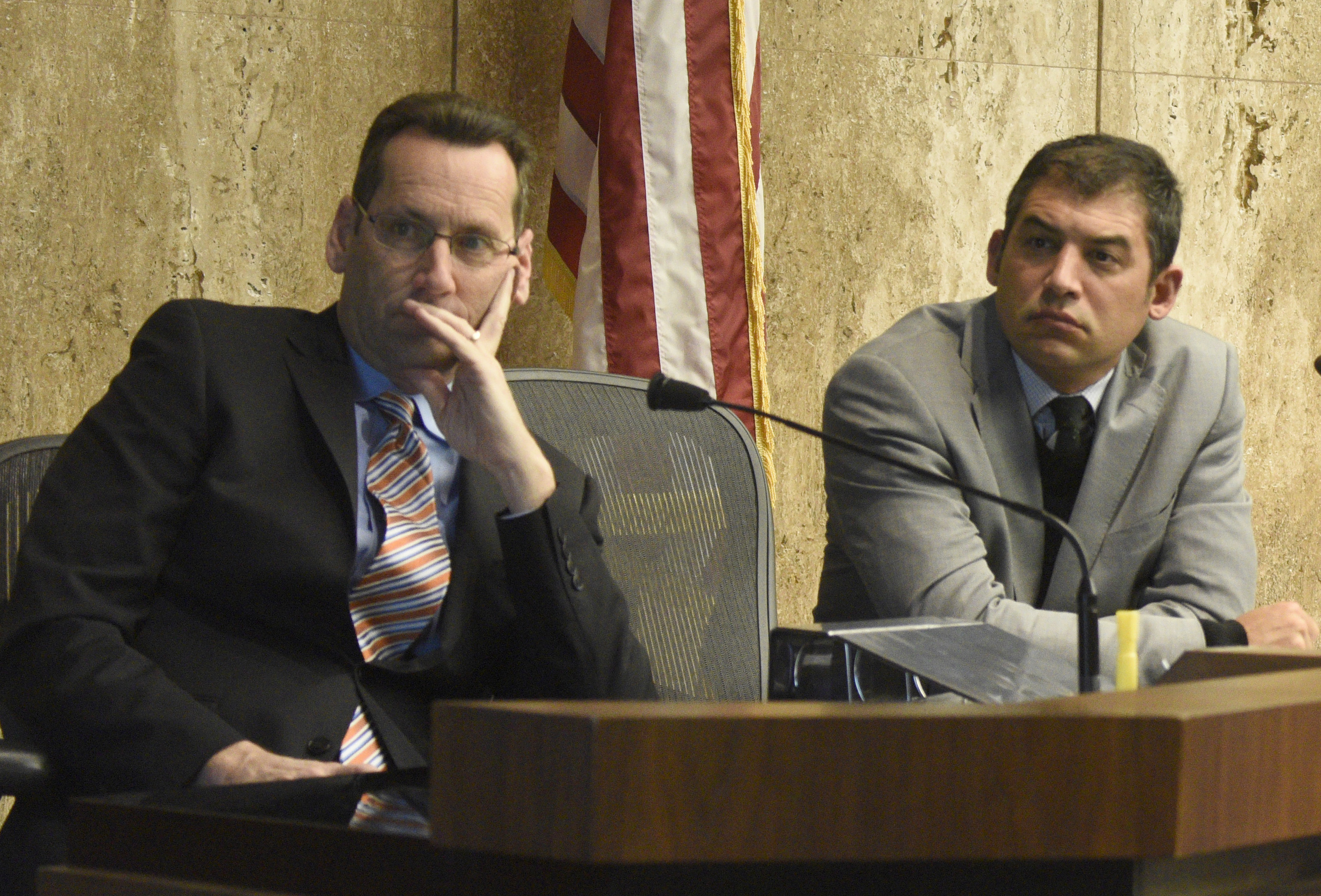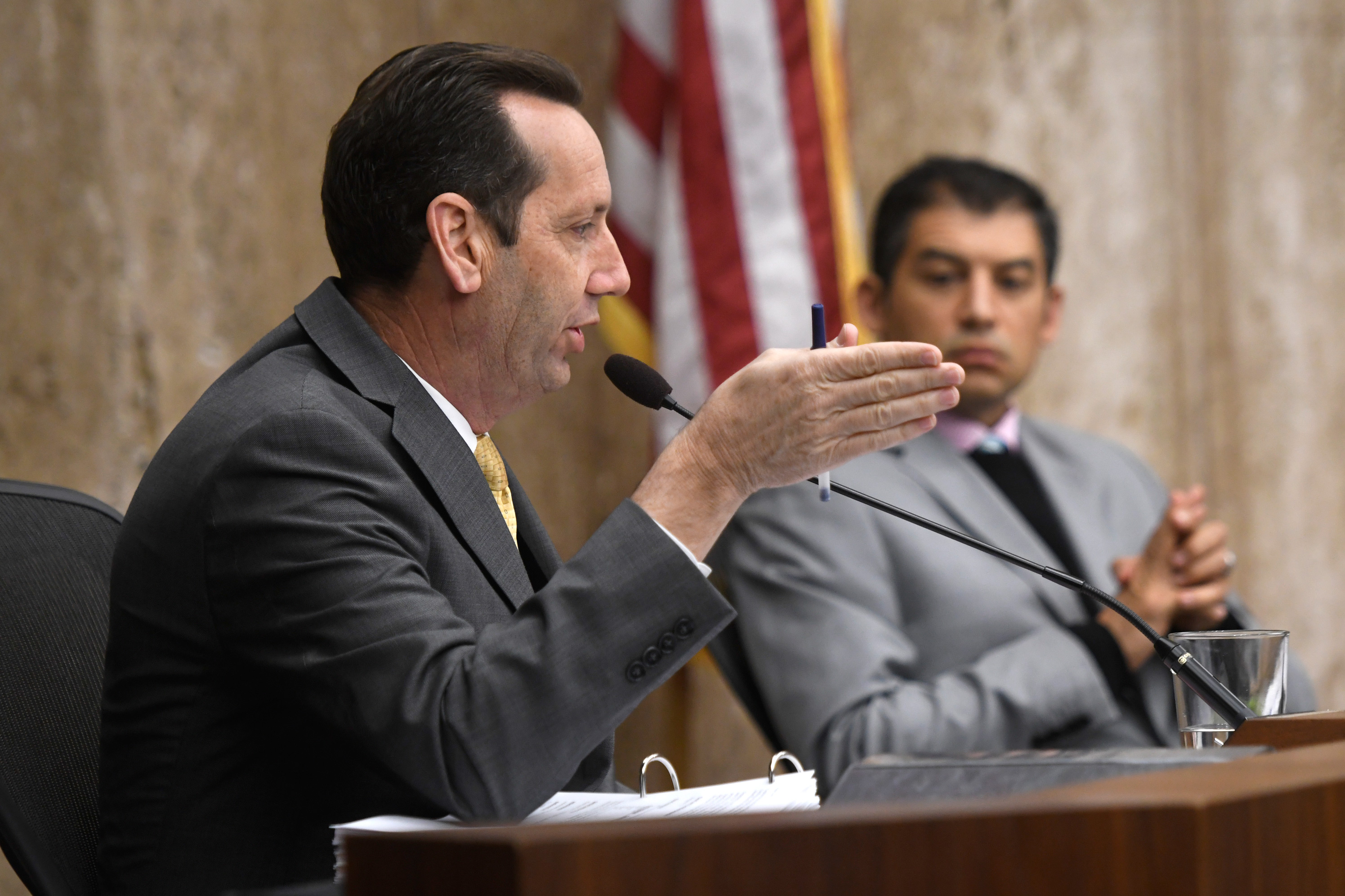The Doobie Brothers Talk Regulations
Supervisors Williams, Lavagnino and County Move Closer to Finalizing Commercial Cannabis Rules

The Doobie Brothers continue to work on what could be their biggest hit yet.
County officials released this week the preliminary outline of how Santa Barbara could regulate the flourishing commercial marijuana industry. Seventeen separate permits in six categories will be required of operators who work with the product — cultivators, transporters, retailers, distributors, testers, extractors. In other words, the county is determining who is able to do what, and more importantly, where they can do it.
Led by supervisors Steve Lavagnino and Das Williams, about 20 county staff members have worked for six months, mainly behind closed doors, to draft the preliminary rules. Next week, the Board of Supervisors will review their work.
In the last year, Lavagnino and Williams have become unlikely allies on the issue. Lavagnino is a pro-business, classic conservative who represents the Santa Maria Valley. Williams is a strong liberal progressive who spent the last six years immersed in Sacramento politics. “I get along with Steve because he is operating in the real world,” Williams said.
Although marijuana is considered a Schedule 1 drug under federal law, its sale is expected to provide much-needed tax revenue for local governments. “A tax on marijuana can help improve the number of deputy sheriffs we have on the ground, and it can improve mental health and substance abuse resources,” Williams said.
The potential revenues, by one estimate, could be in the tens of millions of dollars at a time when Santa Barbara County coffers are facing upward of a $35 million deficit.
Exactly how the county decides to regulate cannabis will translate into how much tax revenue it brings in. The supervisors must craft a tax rate low enough so voters will approve the measure next June, but high enough to bring the county substantial revenue. “It’s not like were going to take the marijuana money and have a big party,” Lavagnino said. “Anything we get is going to the most needy around here.”

They also hope to eliminate the black market. “We’ve been hearing from law enforcement that there is too much of a gray area,” Lavagnino said. The difficulty is that medical marijuana operations have been legal for 20 years. But the rules regulating them are opaque and further complicated by patient privacy laws.
In the last year and a half, Sheriff’s detectives have inspected 24 marijuana operations because neighbors complained. Just 15 were shut down. “If every 18 months we can close down [15] operations, it’ll only take us 40 years to shut down all operations,” Williams joked. “And,” Lavagnino added, “That’s if nobody opens up one in those 40 years.”
Last week, Sheriff’s detectives, working with CAMP (Campaign Against Marijuana Planting), eradicated pot grows made up of 23,000 plants in Los Padres National Forest. But they don’t have the manpower or, frankly, the incentive to go after smaller illegal operations.
“My perfect world is that we are able to send out an enforcement team, and it’s black and white,” Lavagnino said. The entire regulating apparatus is expected to be made up of dozens of new staff positions, including Sheriff’s deputies, inspectors, planning staff, public health educators, and agricultural commissioners.
Consumers and neighbors alike are interested in where recreational pot shops might be located. Residents in the Goleta Valley have turned out at public hearings to oppose dispensaries in their neighborhoods. Williams said it would be very difficult for any legal cannabis operations to locate there. State law requires 600-foot buffers, which the county supervisors could expand, around any schools or childcare centers.
Lavagnino cautioned overregulation could drive business to neighboring counties. “We are so close to San Luis Obispo,” he said. “What if S.L.O. decides they want to do retail, and they put one right across the bridge in Santa Maria, and then [we get] all the impacts and none of the revenue?”
When asked, he said he could see one retail pot shop in the unincorporated area of North County. In South County, Williams said there should be substantially fewer than exist now. The cities are exploring their own regulations and retail locations.
Lavagnino said he voted to legalize recreational marijuana in California with Proposition 64. Williams voted against the initiative. “I would have preferred something that was written by the Legislature and not marijuana proponents,” Williams said. “Basically, I didn’t think we were quite ready,” he said. The unlikely alliance is working to fix that.


